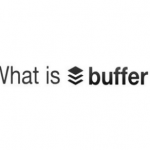
Lessons Learned
This is not one of those sexy, hilarious blog posts with a great secret tip that will make you the greatest social media professional ever. Today’s blog post is about one of those very simple concepts that, when fully explained, makes complete sense.
I write this because the other day, after much discussion with one of my wonderful clients, she told me, “oh, I didn’t understand. You didn’t explain that well.” Have you ever noticed that sometimes, the simplest things are the most difficult to communicate?
Here goes.
Yes, Virginia. You Need Your Own Email Address.
 When I get a new client, I routinely request to be given access to an email account that I can use and control on their behalf.
When I get a new client, I routinely request to be given access to an email account that I can use and control on their behalf.
There are two possible formats for this account:
- The email account can be one that has your company name/URL in the address, such as “socialmedia@yourcompany.com.”
- It can also be a Gmail account (which is something I always request when setting up a blog).
If the account is going to be in the first format, the client either needs to give you access to the account by logging into their server, or they need to have all emails for that account redirected to your email address. (And when I say “your” I am referring to the social media professional.)
Why do I go to all of this trouble? There are a couple of reasons:
- The Permanence Factor: While I certainly hope that every new client will become a lifelong client, I realize that for a variety of reasons, this may not always be the case. If I set up a Facebook page for my client using my personal email address, then I become the owner of that page. While I can always remove myself from an account as an Administrator, it’s better to allow the company to “own” its social media properties. (And my clients always seem to appreciate that I’m not taking them for granted!)
- Segregate the Emails: If you’re anything like me, you get email notifications for various Facebook news, and each time a new follower or Direct Message on Twitter is received. This can become quite cumbersome and really clog up your Inbox when you’re getting emails for multiple accounts. It’s better for those notification emails to go into a separate email account that you, as the social media professional, can monitor.

- Why a Gmail Address: When I set up blogs for clients, there are a few services/plugins I routinely install which require a Gmail address. For example, Google Analytics. If you want the latest and greatest analytics for your website, Google requires you to log in using a Gmail account. Another is Feedburner (which sets up your RSS feed), and is also owned by Google.
Why Redirect?
Earlier, I mentioned that a company email address should redirect messages to you. The reason for this is also simple and is best illustrated by an example:
 I have been trying to set up a Facebook page for a client this week, and in order to allow the company to “own” its Facebook page, I usually set up a dummy personal Facebook account (since all Facebook business pages must be tied to a personal account). Once I set up the dummy account, if a redirect hasn’t been set up, then I sit and wait. And wait. And wait some more.
I have been trying to set up a Facebook page for a client this week, and in order to allow the company to “own” its Facebook page, I usually set up a dummy personal Facebook account (since all Facebook business pages must be tied to a personal account). Once I set up the dummy account, if a redirect hasn’t been set up, then I sit and wait. And wait. And wait some more.
Facebook (and most other social media companies) require you to confirm your email address. They do this by sending a message to that email address, and ask you to click on a link. Very simple. But if you have to wait for somebody at your client’s office to receive the email and send it to you, that adds extra delays. Most clients don’t want delays… they want their Facebook page RIGHT NOW. Setting up a redirect takes the middle man out of the process.
When all of these steps are followed from the very beginning, it makes the social media process run much more smoothly. Your client will thank you.


